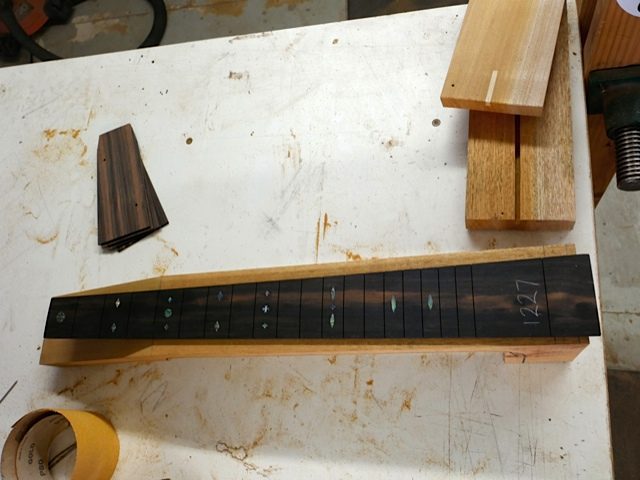We recently landed an incredible new OMC-H from Portland, Oregon-based luthier Gage Halland. Right out of the box, the gorgeous sunburst and energetic tone were the first things we noticed, and it’s only gotten better each time someone picks it up. To celebrate our new relationship with Gage, we sat down for a quick chat about life and lutherie, his work with Michael Greenfield and John Greven, and where his builds are taking him. Give it a listen, and be sure to check out our listing of the sunburst OMC-H pictured here: https://www.dreamguitars.com/shop/halland-omc-h-sunburst-mahogany-sitka-spruce-002-17.html.
 LW: I’d like to start with an obvious question. Why guitars? What first drew you to build these instruments?
LW: I’d like to start with an obvious question. Why guitars? What first drew you to build these instruments?
GH: I started playing guitar in jr. high with big dreams of being great at it…I wasn’t. As early as 16, I was drawing acoustic guitars in all my notebooks at school, but still didn’t have a passion for playing them. I was daydreaming about building them and didn’t know why. As far as I knew, the major manufacturers were the only ones building guitars so I moved onto other things. It was another ten years before I was given a book that pointed me to the door of John Greven (who would become my first mentor) and introduce me to the work of a man that would later become my master, Michael Greenfield.
LW: You describe your work with Michael as a time where “the perfectionist nature of Greenfield Guitars perfectly suited my obsessive “always make it better” attitude. Can you expand on that? In what ways do your and Michael’s philosophies dovetail?
GH: I have this incredibly irritating habit of seeing how something is done (no matter the task) and asking, “why are we doing this? Is this the highest/best approach to the task? How can we make it better?” I must have shortened Michael’s life by a couple years when I got there! Once I quieted that part of my brain and started listening to what he had to teach me, I realized that his approach was very much the same. He never left good enough alone, and it was incredible to see/hear guitars at this level and see their creator sweating over how to improve them still.
When I returned to Portland to create my own instruments I found Michael’s shop motto far more ingrained in my psyche than I had realized: “Perfection is acceptable.” That has become the driving force behind my work now. I want to always be improving and exploring new ideas, techniques, materials, etc. I doubt I’ll ever be content with the what I’ve done before, I’ll always be pursuing perfection.
LW: That’s an appropriate motto for both of you. After such excellent tutelage, what is your current approach to voicing an instrument? How do you continue to experiment?

GH: I’ve had two incredible teachers with very different ideas of what makes a guitar sound great. Greven taught me about the history of the steel string guitar and his approach is to make an incredibly light, responsive guitar. Greenfield showed me what the modern guitar is capable of and his measured approach to instrument construction. I would say my instruments definitely lean more towards the Greenfield camp.
When it comes to voicing my own instruments I aspire to the sound of grand pianos and old church bells. These things have undeniable tone and you’ll never find a lightweight version of either. I like to think of it as mass applied musically.
I’m constantly researching new materials and methods for creating a better musical instrument (I currently have some components that are manufactured by defense contractors!). I’m not afraid to deviate from the guitar construction norms to get to the sound that I’m after.
LW: Who are some of your favorite guitar players? Have you built instruments for any of them?
GH: Michael Watts’ emotive, “warm-honey” style of guitar playing is one of my favorites. I recently received Forest Bailey’s new album and his smoother take on the percussive style is really great. Of course I have to mention McKee, McManus, Bensusan and the like, these players where my introduction into fingerstyle guitar and I’m still amazed every time I put one of their albums on.
 At heart I’m a singer-songwriter fan and I’ve had the privilege of building guitars for some of my modern heros. Barton Carroll is one of the best songwriters out there and quite the guitar player to boot (listen to his song “Every Little Bit Hurts” if you want prime examples of both)! I was also able to deliver a guitar to Al James whose knockout songwriting was the driving force behind his band Dolorean for many years. The band broke up a few years ago, but I selfishly hope that a new guitar might inspire some new recordings in the future!
At heart I’m a singer-songwriter fan and I’ve had the privilege of building guitars for some of my modern heros. Barton Carroll is one of the best songwriters out there and quite the guitar player to boot (listen to his song “Every Little Bit Hurts” if you want prime examples of both)! I was also able to deliver a guitar to Al James whose knockout songwriting was the driving force behind his band Dolorean for many years. The band broke up a few years ago, but I selfishly hope that a new guitar might inspire some new recordings in the future!
LW: Talk to me about your current shop arrangement. How do you manage workflow?
GH: Aaaah my shop, well it’s…humble. I work out of a single-car garage in Portland. It started out as a temporary workspace three years ago and I just haven’t found anything better to date. It’s not my dream shop by any means, but I’m grateful to have anywhere to work within the city limits. I’m a little over the commute though.
I’d say my workflow follows the traditional lutherie shop, in that everything is done on one bench in the middle of the shop. I’d love to have task specific stations to speed up construction but there’s no space for that right now. The focus of my shop and workflow is to make efficient strides in the schedule that allow me to slow down and really sweat the details that set my guitars apart.
LW: So what’s on your bench right now?

GH: Right now I’m fortunate to be building two very special guitars. A non-cutaway OM-H with some very special Brazilian Rosewood and an ancient Cedar top. The other is the first of my new body style which is similar in dimension to a traditional Dreadnought but most definitely has a modern shape with modern construction methods. This guitar is African Blackwood and Euro Spruce with all the bells and whistles (armrest, ribrest, cutaway, multiscale fretboard and some other features I can’t reveal just yet.) The OM-H is commissioned, but the new D-HC is available for adoption.
LW: That sounds exciting! What music are you listening to right now? What kind of music are you yourself playing?
GH: Mostly Folk and singer-songwriter stuff, Jeffery Martin, Barton Carroll, Dolorean, Derik Hultquist, Corb Lund and Hayes Carll are some of the names that immediately come to mind.
I’ve been working on Michael Watts’ tune Vetiver for quite a while. Every time I think I have it nailed I go back to listen to him play it and immediately head back to my practice space. I just can’t wring all the emotion from every note like he can!
LW: These days, there’s quite a bit of competition in the boutique guitar market. What sets you and your guitars apart from the pack?
GH: Pursuing tone, volume, clarity, sustain, and balance are the keystones to my approach in guitarmaking. The sound of my instruments definitely falls into the “modern fingerstyle” category, so note-to-note delineation is very important. I don’t want the player’s musical choices to be dictated by the sonic limitations of the instrument.
I’ve spent years tweaking my instruments into what I feel is a cohesive design where the shape, the feel of the guitar in your hands, and the restrained decorative elements give you an impression of the guitar’s sound before you pluck the first string. Fit and finish is where my obsessive nature shines through. Clean joinery is paramount. From my signature lambs-tongue detail on my arm and ribrests, to the beveled edges on the bridge, I want anyone who buys one of my guitars to get the sense of how much of myself I put into these instruments.
LW: You’ve definitely nailed the visual presentation: the fit-and-finish was the first thing I noticed when we unboxed your Mahogany OMC-H. If you had not become a guitar maker, where do you think life would have led you?
GH: This is a hard one. I have a deep fascination with old wooden ships and timber frame homes. I’d probably end up doing either of those things very happily.
LW: Okay, last question: what was the first guitar that you played where you really “got it,” where you fell in love with the instrument? Do you feel as though you’re trying to incorporate that feeling into the voice of your own instruments?
I was very lucky to find a 30s Gibson L-00 in the used guitar section of a huge music store chain.
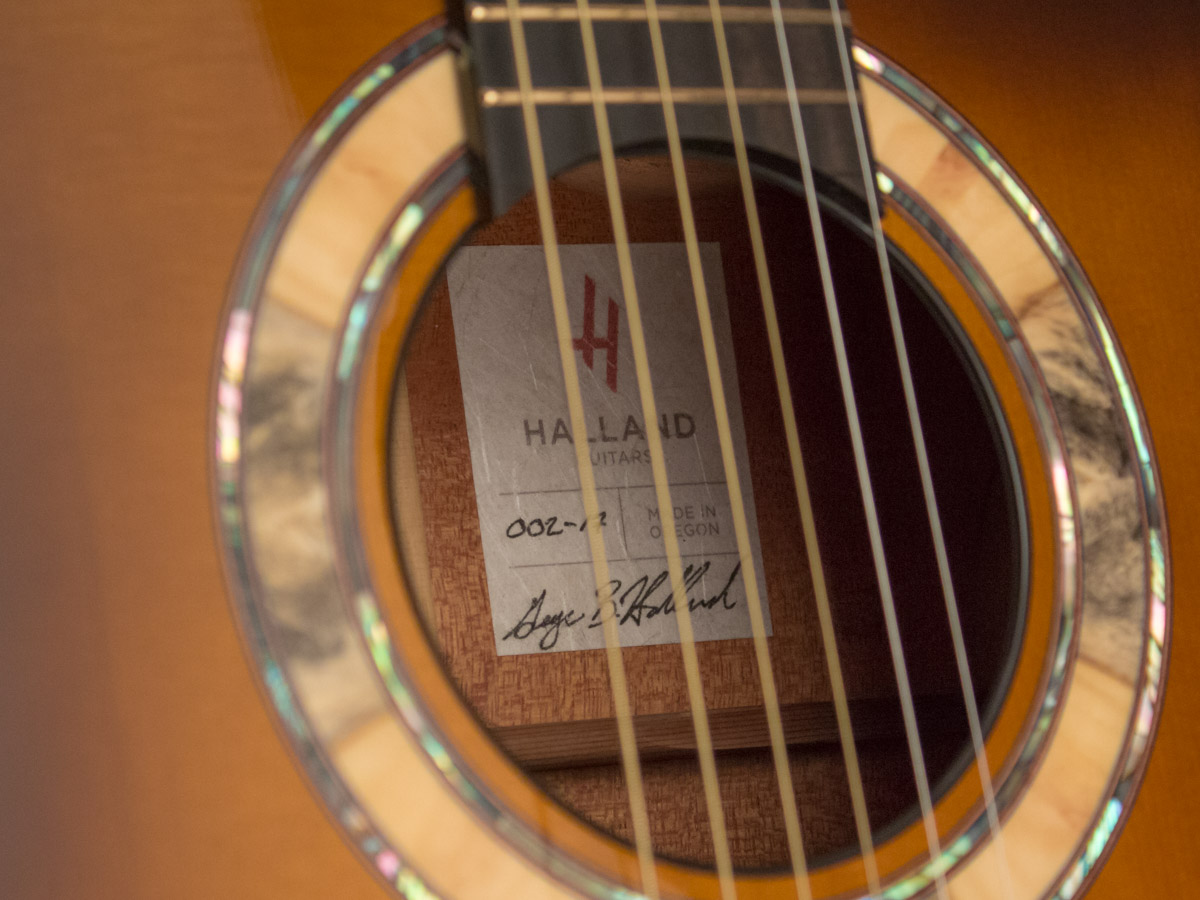
It had mile-high action and had obviously been abused, but it also had all that wonderful L-00 tone and volume. It’s the only one that I regret selling. I don’t build in the traditional style, and I’m not going after a vintage sound, but instruments like that definitely leave an impression and that’s what I’m after, the lingering impression left by a well-built, handmade guitar.
We’re obviously stoked to strike up a relationship with Gage; his work speaks for itself. Do check out our sunburst OMC-H here: https://www.dreamguitars.com/shop/halland-omc-h-sunburst-mahogany-sitka-spruce-002-17.html. Cheers!




























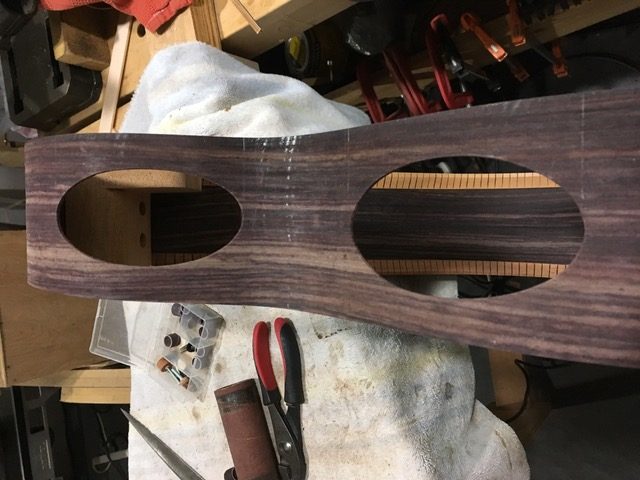










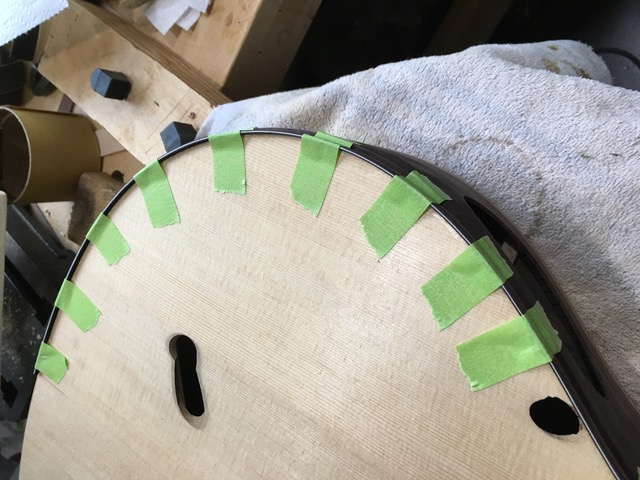






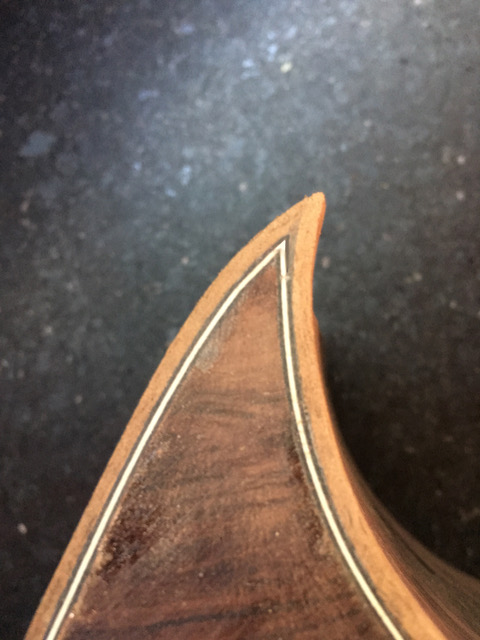






















 So, when I graduated from high school, I started post-diploma courses, but it was not my thing…at all. It had nothing to do with guitar building, and I was not happy about it. So, I quit and I decided to find a professional way to pursue what I love. I wanted to set up my electric guitars for me and my friends, and the best way to do that was to find a master for an apprenticeship, or a school. I didn’t want to stay in France, so I started to research where to find a proper school outside of my country.
So, when I graduated from high school, I started post-diploma courses, but it was not my thing…at all. It had nothing to do with guitar building, and I was not happy about it. So, I quit and I decided to find a professional way to pursue what I love. I wanted to set up my electric guitars for me and my friends, and the best way to do that was to find a master for an apprenticeship, or a school. I didn’t want to stay in France, so I started to research where to find a proper school outside of my country.
 I am not sure if I have an archetype, properly, but I have a philosophy. Of course, my principal inspiration comes from my mates in the lutherie world, but as a craftsman, I try to find inspiration in whatever I see in my life. It could come from a dollmaker, watchmaker, from a furniture restorer or an insect. I think that craftsmanship is a whole thing, like a gigantic tree with tons of branches, and I am one of its tiny buds. Leonardo DaVinci definitely is a good example of what I am talking about: he was a man of many talents who mastered so many things with one thing in mind: curiosity.
I am not sure if I have an archetype, properly, but I have a philosophy. Of course, my principal inspiration comes from my mates in the lutherie world, but as a craftsman, I try to find inspiration in whatever I see in my life. It could come from a dollmaker, watchmaker, from a furniture restorer or an insect. I think that craftsmanship is a whole thing, like a gigantic tree with tons of branches, and I am one of its tiny buds. Leonardo DaVinci definitely is a good example of what I am talking about: he was a man of many talents who mastered so many things with one thing in mind: curiosity.

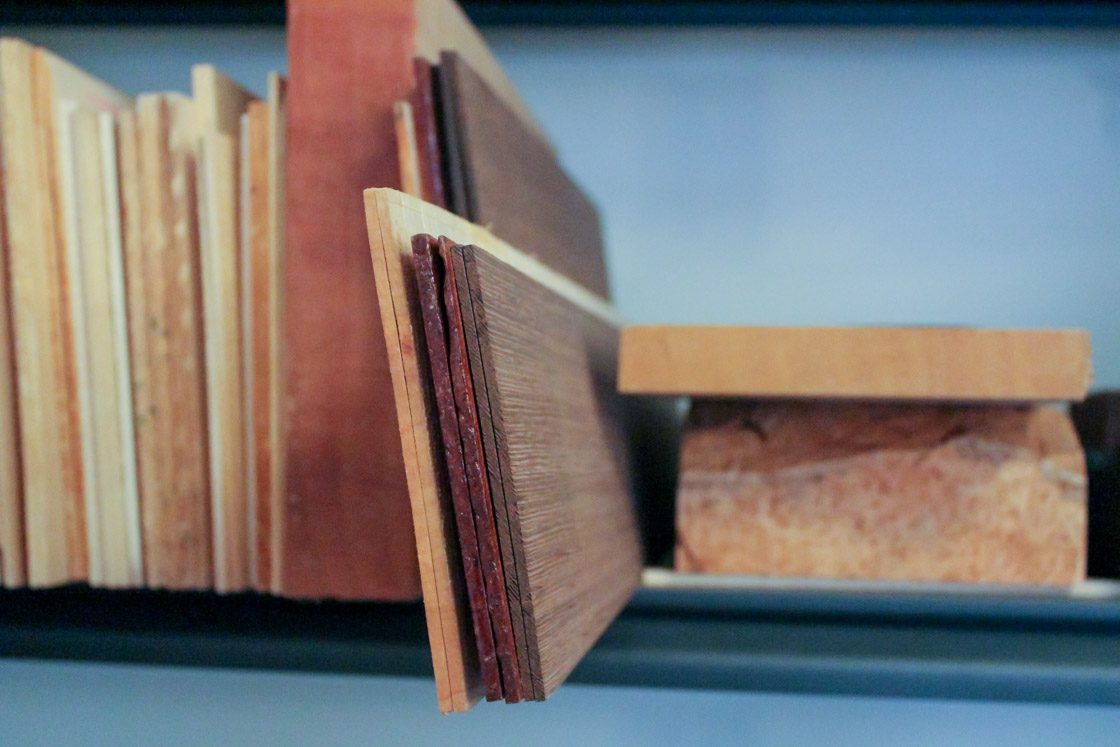 BP:
BP: 
 I have two guitars for customers I will receive back from my finisher soon. A Flamenco Spanish Cypress & Carpathian Spruce (new shape), and an OM in Koa and German Spruce.
I have two guitars for customers I will receive back from my finisher soon. A Flamenco Spanish Cypress & Carpathian Spruce (new shape), and an OM in Koa and German Spruce.
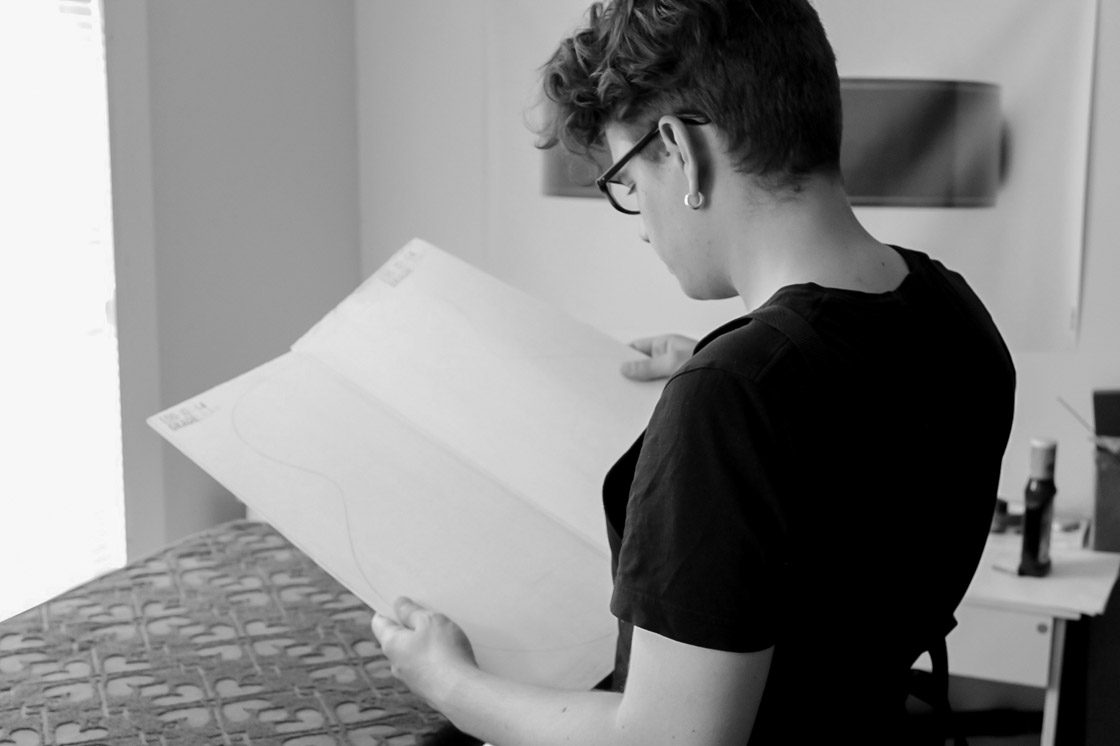 BP: Well, our market is definitely competitive, because a lot of us are incredibly gifted, and new builders are coming every years. But we all are in the same boat, and our community is super helpful and full of kind people. I’ve had tons of great experiences and good relationship with my colleagues, and when someone needs help I try to be there for them. In the contemporary world, the word “competitive” is only half appropriate because we all build instruments in a very personal way. My philosophy is, “I strive to build my instruments with the finest Tone, Ergonomics, & Aesthetics.” I call the rosette/headstock/endgraft the Holy Trinity because they are a huge part of my identity in terms of style. I love Art Deco, and I try to explore this style with marquetry techniques and the color/texture of the wood. It is incredibly fun for me to push myself a little in terms of craftsmanship, guitar after guitar. My sound is, of course, my main goal. I always keep in mind a certain balance, clarity, and definition for each string. I love when my high frequence shine with, of course, a strong 6th string presence too.
BP: Well, our market is definitely competitive, because a lot of us are incredibly gifted, and new builders are coming every years. But we all are in the same boat, and our community is super helpful and full of kind people. I’ve had tons of great experiences and good relationship with my colleagues, and when someone needs help I try to be there for them. In the contemporary world, the word “competitive” is only half appropriate because we all build instruments in a very personal way. My philosophy is, “I strive to build my instruments with the finest Tone, Ergonomics, & Aesthetics.” I call the rosette/headstock/endgraft the Holy Trinity because they are a huge part of my identity in terms of style. I love Art Deco, and I try to explore this style with marquetry techniques and the color/texture of the wood. It is incredibly fun for me to push myself a little in terms of craftsmanship, guitar after guitar. My sound is, of course, my main goal. I always keep in mind a certain balance, clarity, and definition for each string. I love when my high frequence shine with, of course, a strong 6th string presence too.



















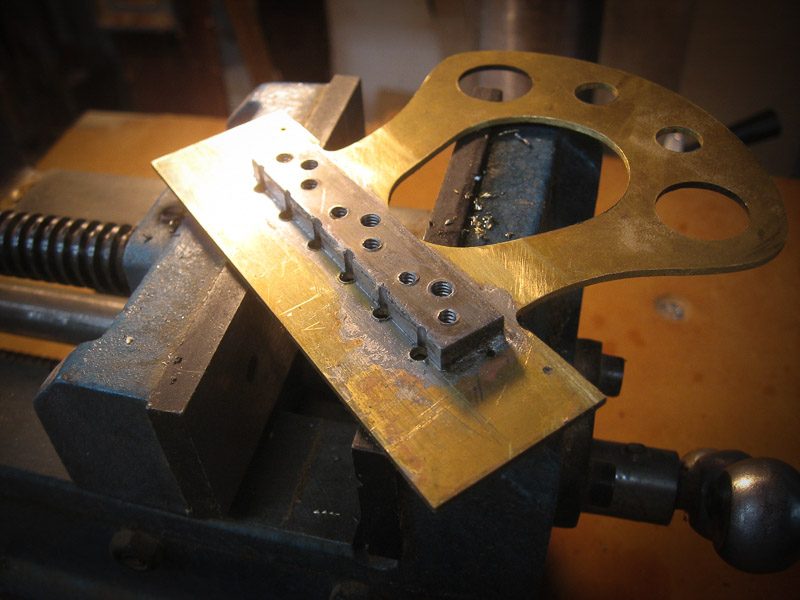

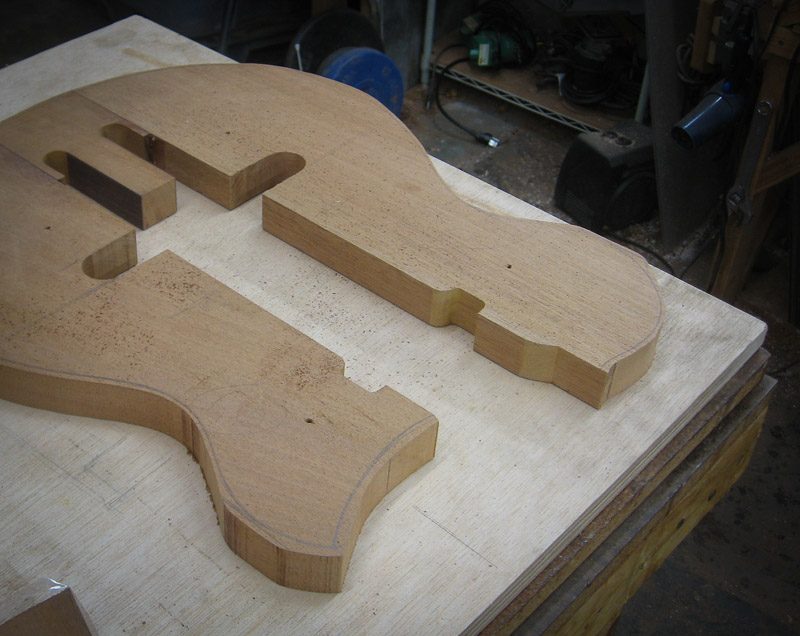



























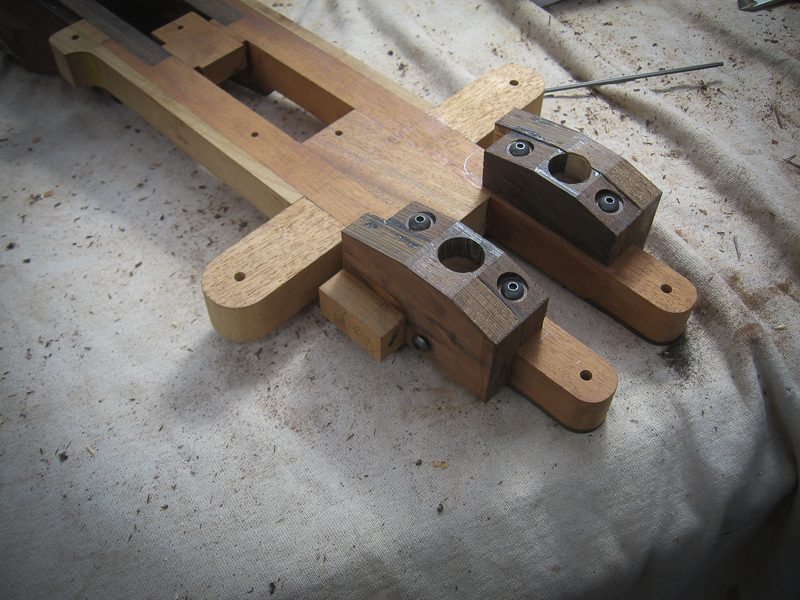



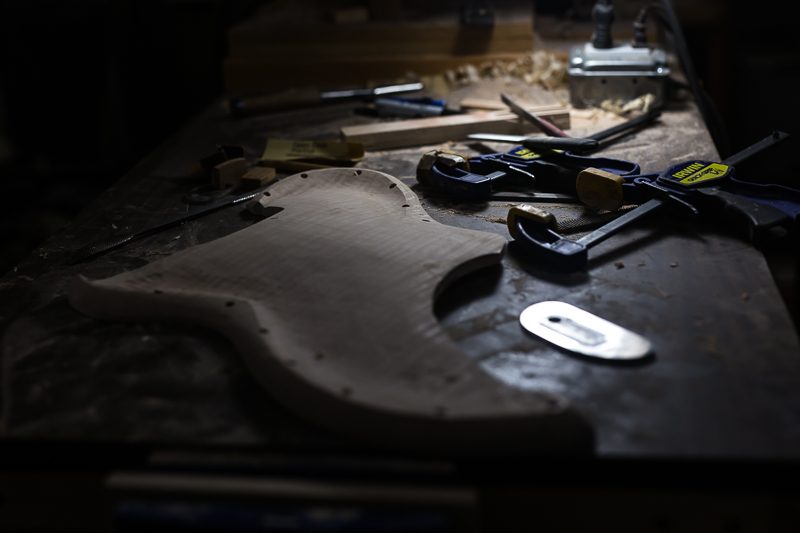










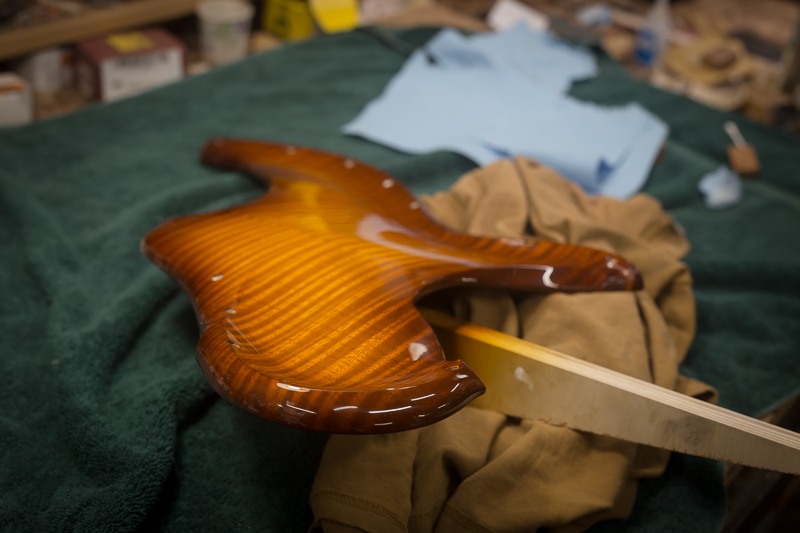










































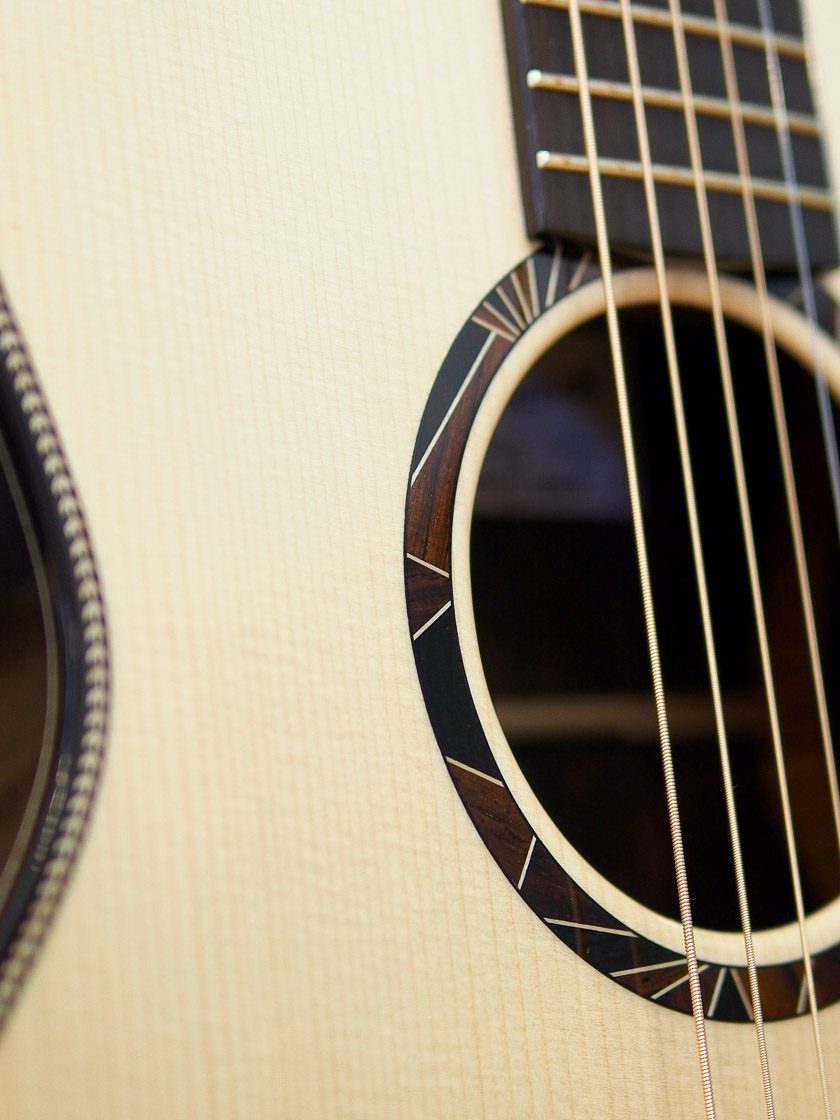
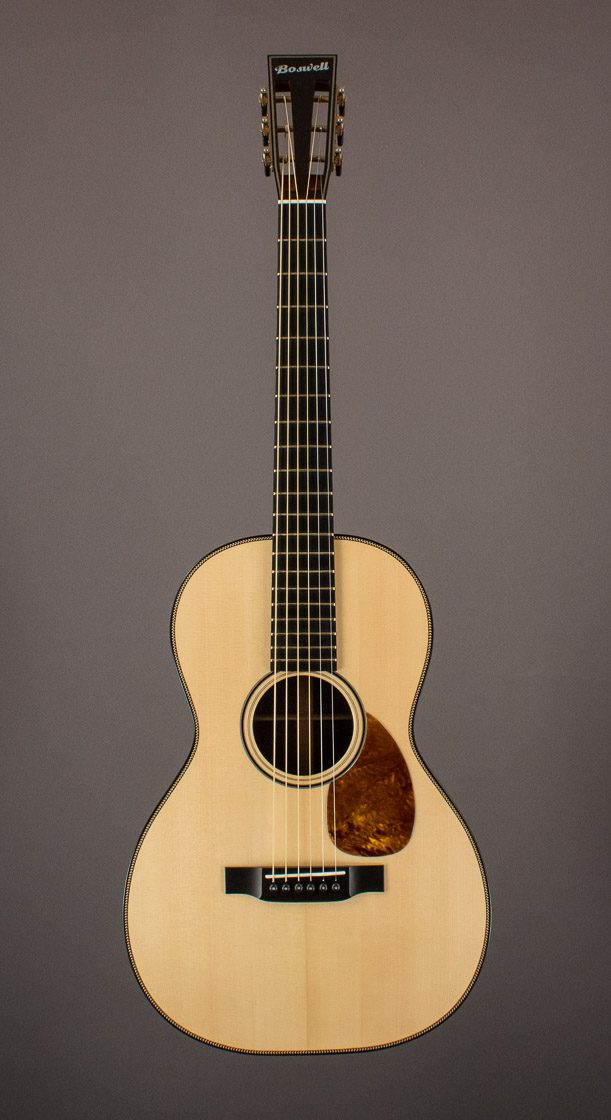
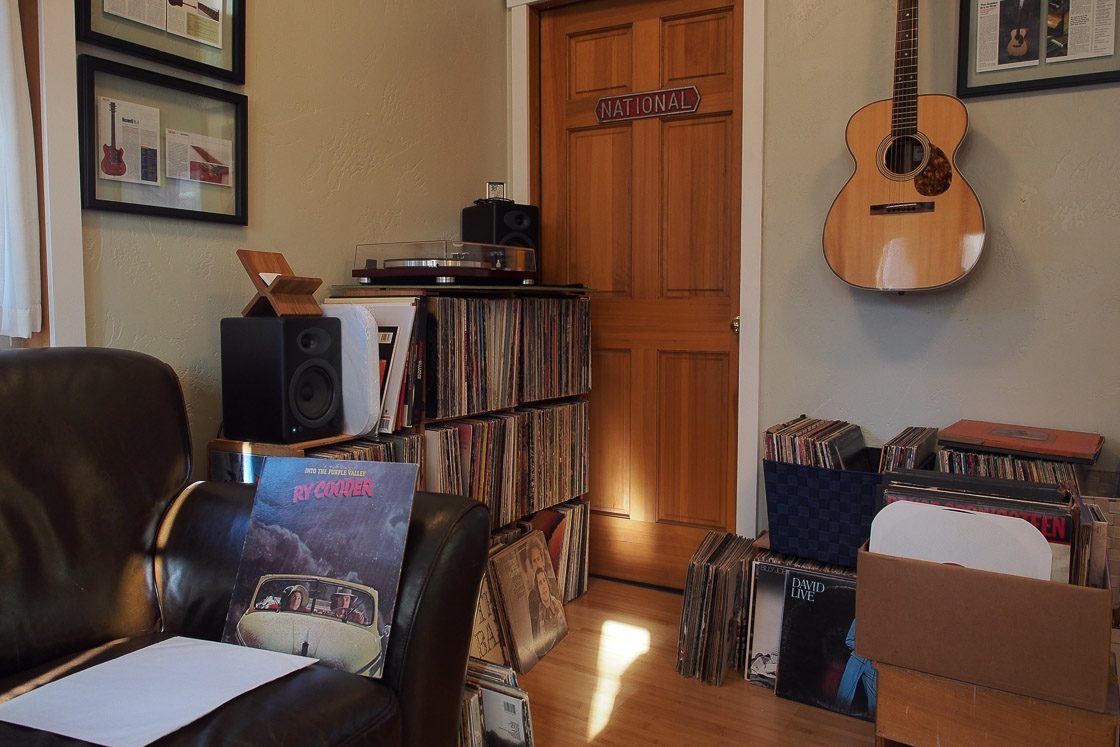
 BB: Like I said before, when I first got started with building, I was a repair guy, and really just copying what I had seen for years, both inside and out. But as I began to find truly inspiring materials, which wasn’t easy, and as I started to experiment with my own bracing ideas, my instruments started to sound more and more my own. I have tried various forms of voicing techniques, but the one thing that I always seem to come back to, the one thing that seems to never let me down, is my ear. I have worked in guitar shops and played music professionally for upwards of 25 years now. I always say that tone is the last thing for a player to learn. Developing one’s ear is not an easy thing to do. But,
BB: Like I said before, when I first got started with building, I was a repair guy, and really just copying what I had seen for years, both inside and out. But as I began to find truly inspiring materials, which wasn’t easy, and as I started to experiment with my own bracing ideas, my instruments started to sound more and more my own. I have tried various forms of voicing techniques, but the one thing that I always seem to come back to, the one thing that seems to never let me down, is my ear. I have worked in guitar shops and played music professionally for upwards of 25 years now. I always say that tone is the last thing for a player to learn. Developing one’s ear is not an easy thing to do. But, when you are subjected to it day in and day out for more than half of your life, inevitably it becomes somewhat engrained. When I first started building, I already knew what I was hearing when I would tap on a soundboard even before I could describe what was going on. Nine times out of ten, when I look inside of a production guitar, I see a very over-built instrument. They’re having to do that to protect themselves against warranty claims, but they’re also killing the tone of the instrument. Many things have led me to where I am today with the voice of my instruments (playing music, repairing, my education in engineering), but the one thing I know I can truly count on every time is my ear.
when you are subjected to it day in and day out for more than half of your life, inevitably it becomes somewhat engrained. When I first started building, I already knew what I was hearing when I would tap on a soundboard even before I could describe what was going on. Nine times out of ten, when I look inside of a production guitar, I see a very over-built instrument. They’re having to do that to protect themselves against warranty claims, but they’re also killing the tone of the instrument. Many things have led me to where I am today with the voice of my instruments (playing music, repairing, my education in engineering), but the one thing I know I can truly count on every time is my ear.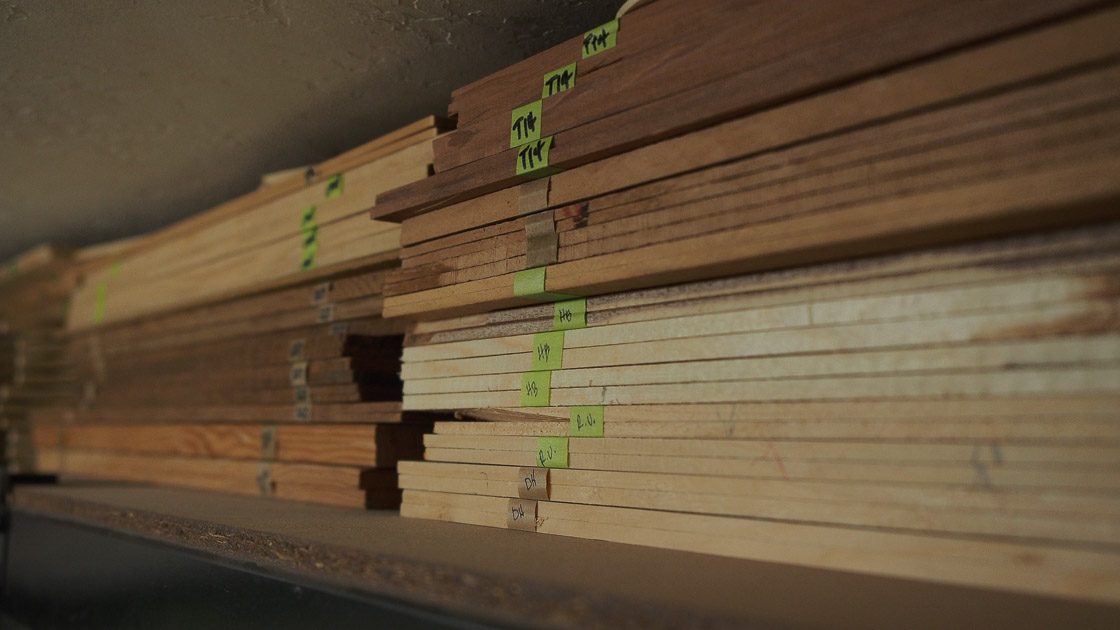
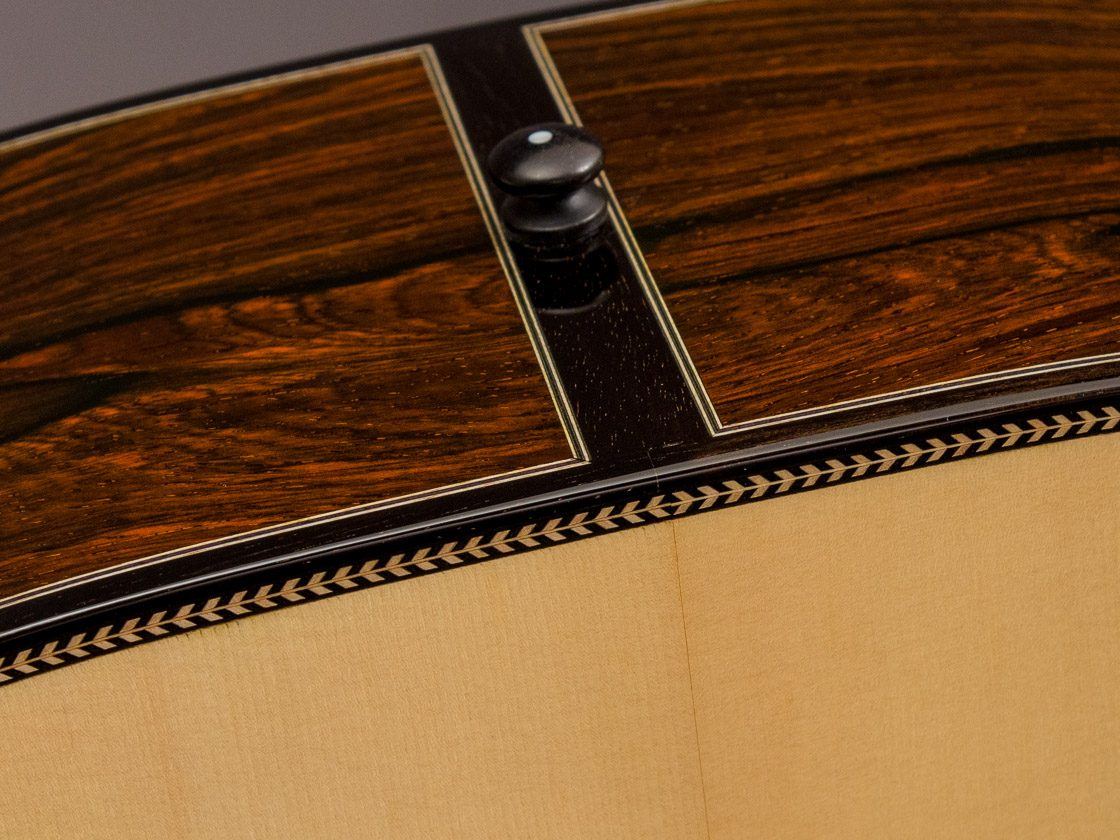
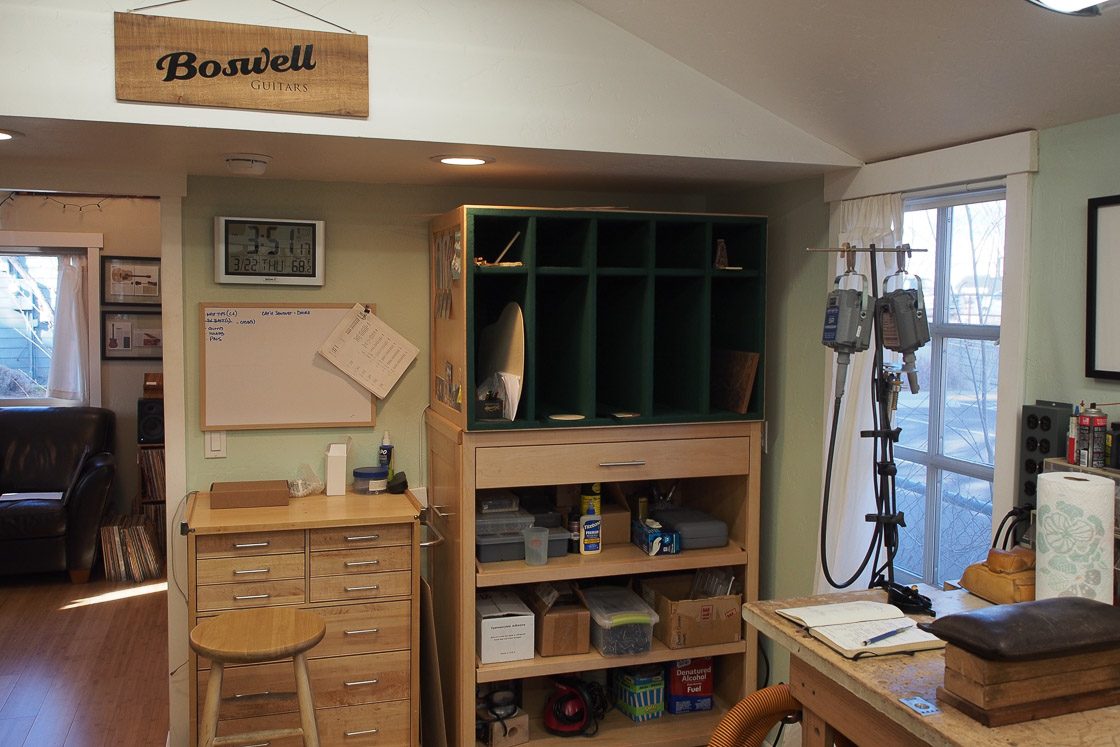

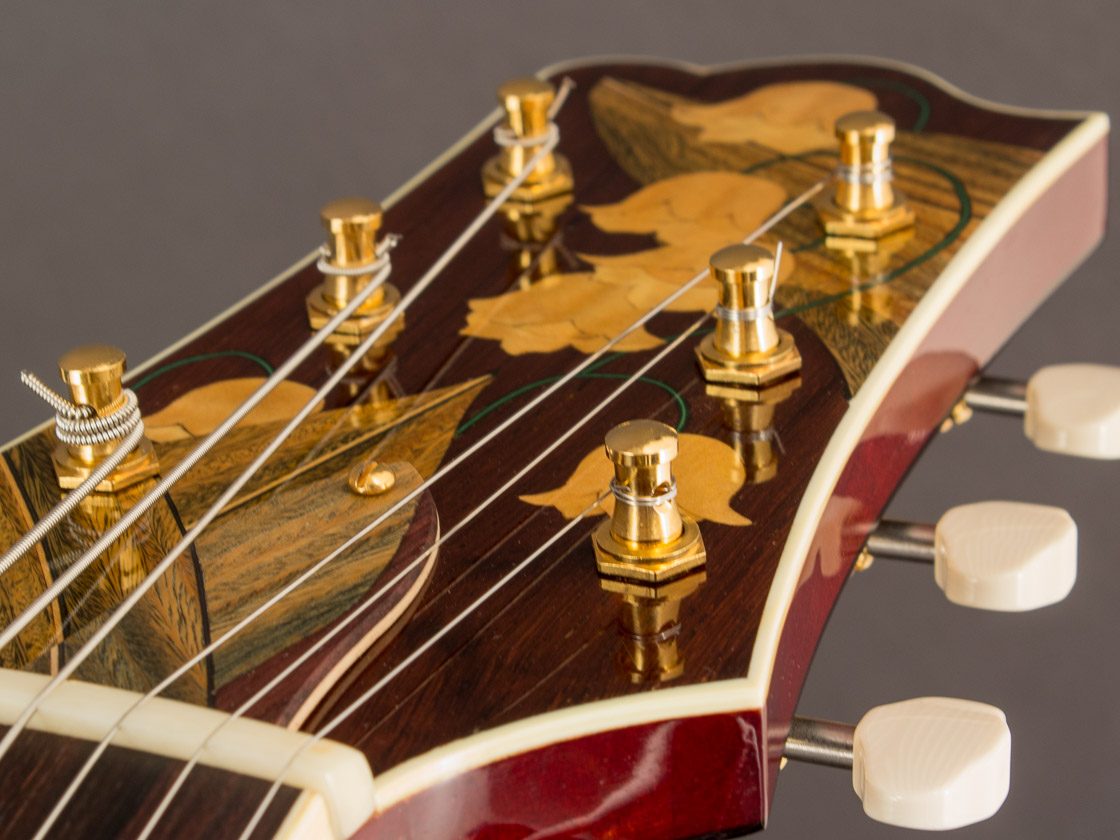
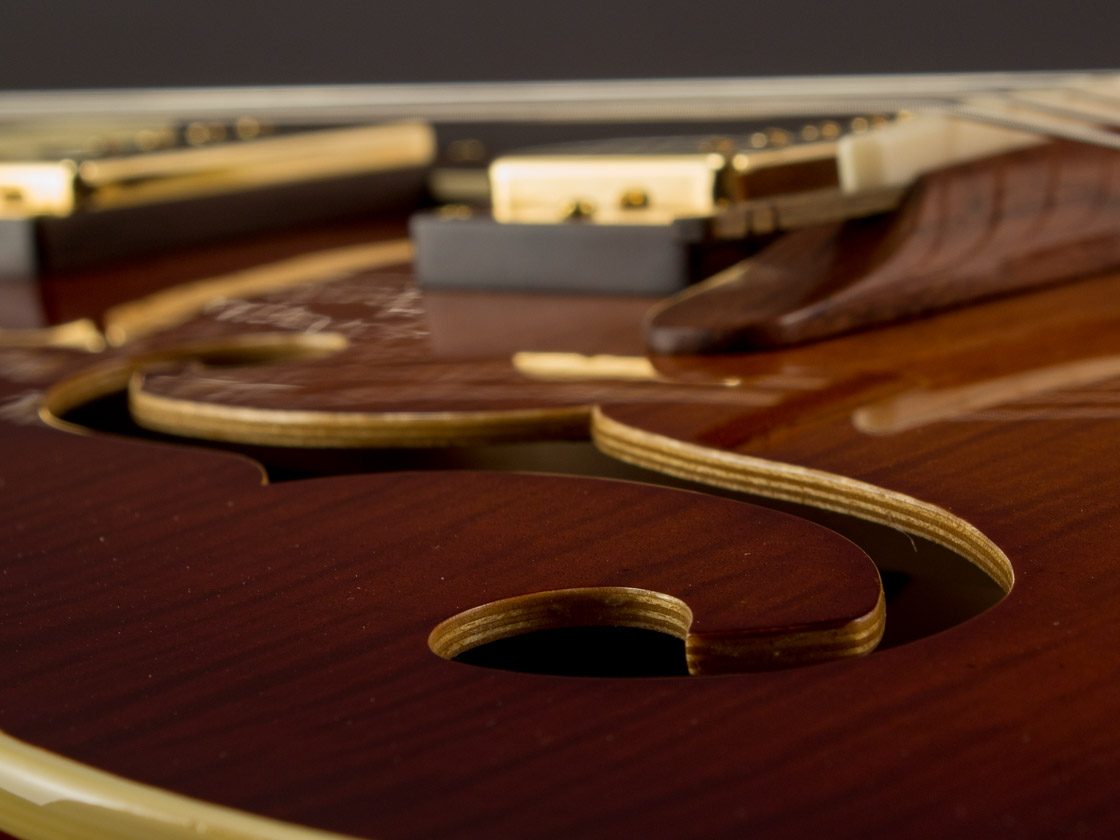
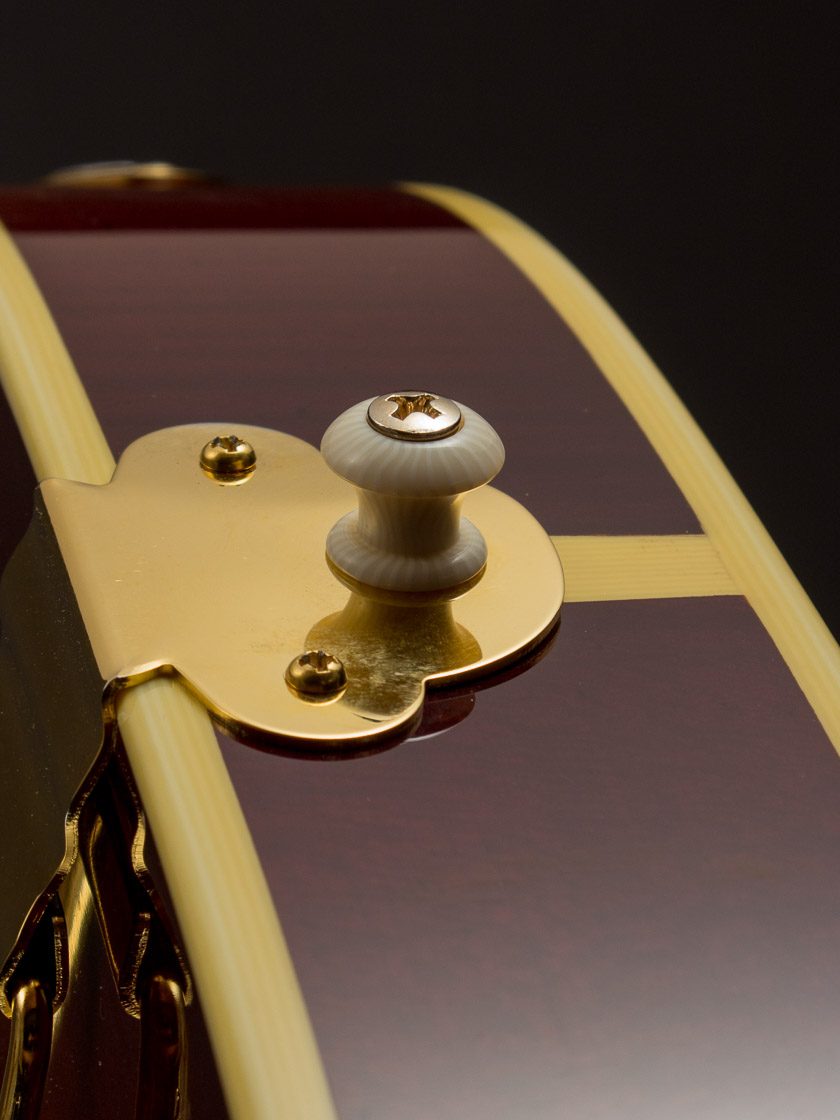
 GN: I am married and have two daughters, so they keep me busy. My new shop is in my home, so my family is a huge part of my life. I also have to admit that I’m a bit obsessed with Brazilian Jiu Jitsu. It was something that I picked up in Santa Cruz to relieve stress. I think most artists and musicians can be a little obsessive compulsive. It’s important to have a healthy outlet.
GN: I am married and have two daughters, so they keep me busy. My new shop is in my home, so my family is a huge part of my life. I also have to admit that I’m a bit obsessed with Brazilian Jiu Jitsu. It was something that I picked up in Santa Cruz to relieve stress. I think most artists and musicians can be a little obsessive compulsive. It’s important to have a healthy outlet.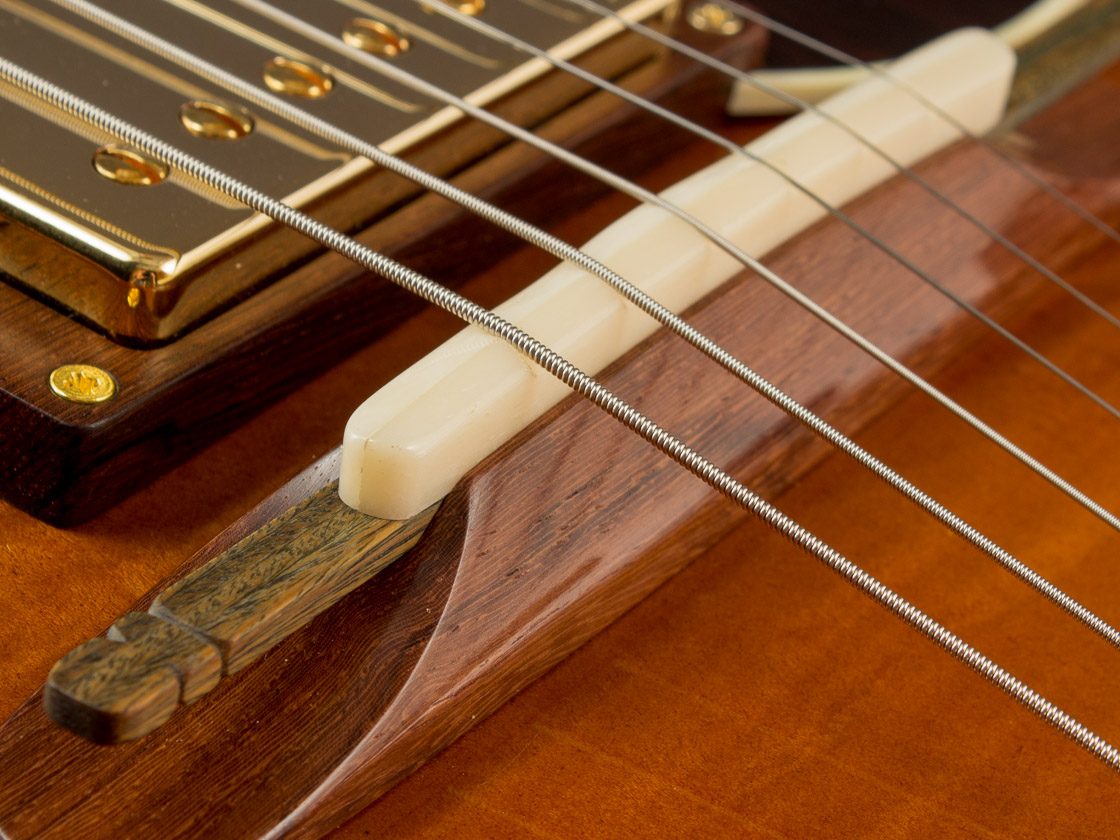 GN: The Marcus King Band, I think they may be from your neck of the woods. Great guitar playing, solid band. I always have blues playing in the shop. I’ve been on a Hound Dog Taylor kick this week. I’ve been teaching my daughters how to play slide guitar. My seven year old plays a killer slide version of Beat on the Brat by The Ramones.
GN: The Marcus King Band, I think they may be from your neck of the woods. Great guitar playing, solid band. I always have blues playing in the shop. I’ve been on a Hound Dog Taylor kick this week. I’ve been teaching my daughters how to play slide guitar. My seven year old plays a killer slide version of Beat on the Brat by The Ramones.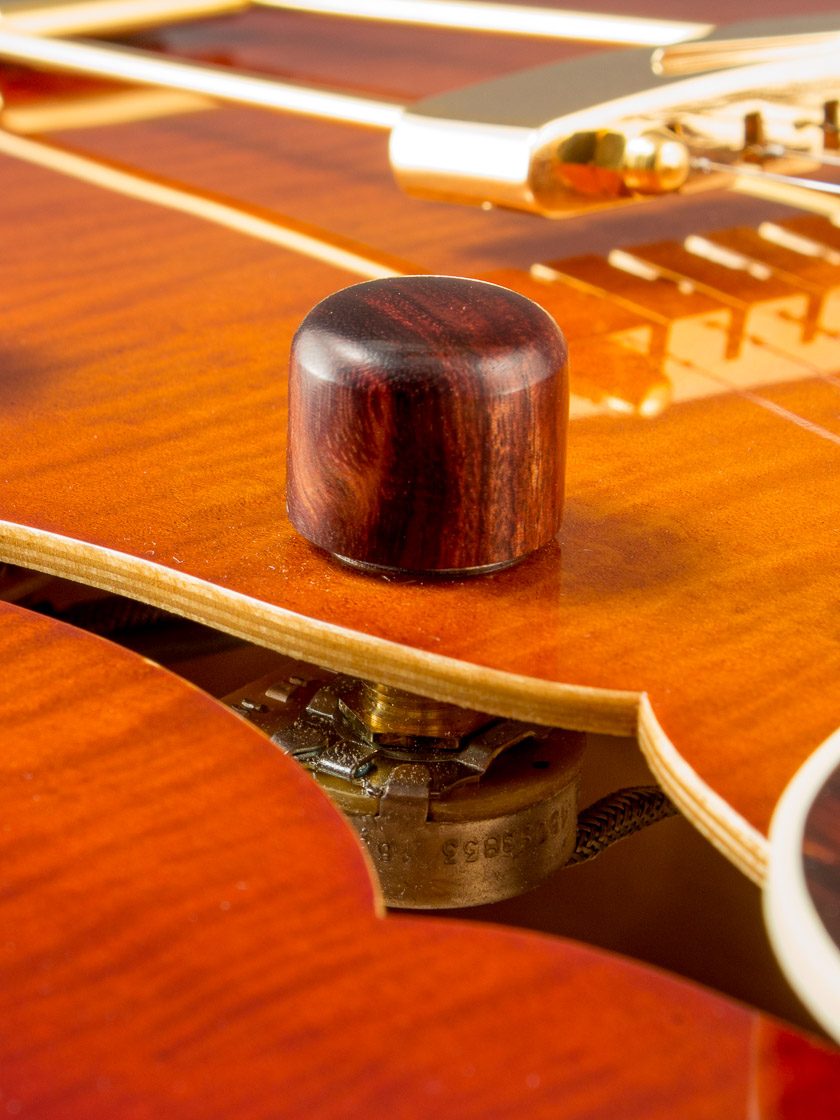



 CF: As a luthier working alone, I think it’s difficult not to experiment. When voicing an instrument I try to think about who will be playing it and how they play. It is great to think that you can build an instrument as light as possible but in the hands of certain musicians they will destroy something like that within months. If I am working with someone who is into playing with a light touch, I will make the instrument as light as possible.
CF: As a luthier working alone, I think it’s difficult not to experiment. When voicing an instrument I try to think about who will be playing it and how they play. It is great to think that you can build an instrument as light as possible but in the hands of certain musicians they will destroy something like that within months. If I am working with someone who is into playing with a light touch, I will make the instrument as light as possible.
 LW: What music are you listening to right now?
LW: What music are you listening to right now?


















































































